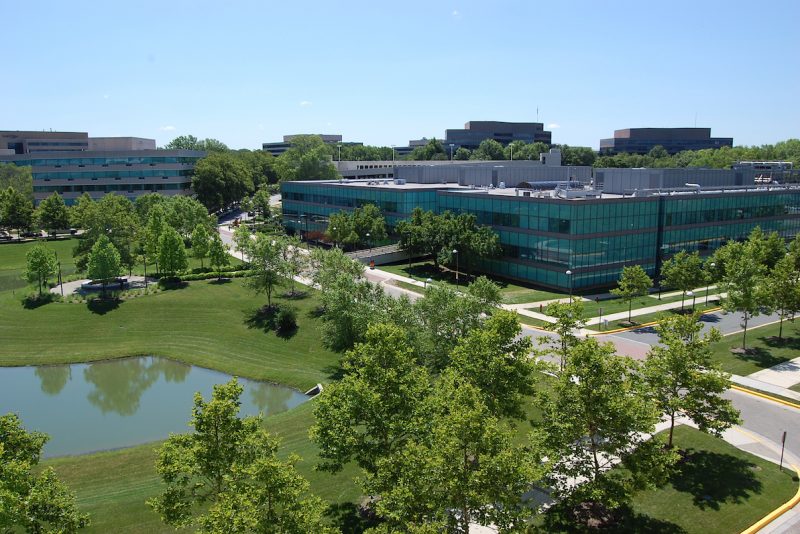The sudden experiment in widespread telework for office workers as a result of the COVID-19 pandemic has pundits appropriately questioning the future of the office. Much of this discussion focuses on using technology to make buildings safer, but there are more fundamental questions about the need for and relevance of office space itself. The sector is at risk of disruption: an estimated 40% to 50% of the 472,126 jobs in Montgomery County could be performed at home by telecommuting.[i] That in turn has significant implications for real estate in Montgomery County, which has 1,533 office buildings offering 73.3 million leasable square feet, approximately 12% of which was vacant in Q4 2019 before COVID-19 hit.[ii]
More than real estate and jobs, a thriving office sector and vibrant job market is an essential element of our vision for the future of Montgomery County. Montgomery County is in the midst of a long-term effort to transform aging suburbs exclusively dependent on automobiles into compact urban hubs accessible by transit, vibrant corridors and complete communities where the essentials of work, play and retail is all within a 15-minute walk, bike or transit ride. The Thrive Montgomery 2050 effort and our area master plans, such as for White Flint and White Oak embody this vision. A healthy portfolio of office buildings distributed throughout the county is therefore critical for a strong economy, fighting the ill effects of climate change and creating self-sufficient communities. It is therefore critical that Montgomery County anticipate how our office districts remain relevant post-COVID and make plans to foster the types of neighborhoods that employees and companies will demand.In this first of three blog posts, we will examine why certain businesses have traditionally needed office space and share insight into how that value and space might change. In future posts, we will examine scenarios for office demand post-pandemic, and then dive into what the future of the office district might look like in Montgomery County.
The four pillars of office demand
While claims of the imminent demise of the office are premature, office demand post-COVID-19 will clearly differ from pre-COVID trends. However, predictions made in the middle of a volatile market are often inaccurate and have limited value in planning for the future. Instead of guessing, it is better to know what questions to ask, which in turn allows experts to track the market and update expectations as conditions evolve. This means we should understand the four key ways that office space support businesses: operations, collaboration, recruitment and training new staff.
Operations: Less dedicated office space and more time from home

Cubicles have long been mainstays of office culture.
Offices are where day-to-day management occurs. It is the part of the job where we sit at our desks, working on deliverables and answering general emails and phone calls. The relatively painless transition to mass teleworking revealed that office space provides limited value to the operation of many businesses over the short term. This revelation will cause many firms to question the value of top-tier office space costing between $7,500 per 150-square-foot cubicle per year in the suburbs and $12,000 per year in downtown Washington, D.C.[iii] At these rents, a mid-sized business of 100 employees that lets half its workforce work from home at a given time and reduces the size of its office could lead to savings of up to $500,000 every year.
Even if the remaining three pillars supporting office space demand remain, reduction in operations space will be impactful: a large portion of every office is dedicated to operations in the form of private offices, cubicles or dedicated workstations. The report that many tech firms now expect to reduce office space while increasing headcount reflects the devaluing of the cubicle. While the current pandemic may result in firms taking on more space to let employees spread out, the longer-term trends toward increased working from home and reduced storage of physical files favors continued reduction in the total amount of office space per worker.
With reduced space dedicated to each staff member, office real estate may become a service that companies utilize to flexibly expand and contract as the need arises rather than an asset under company ownership. The increased desire firms have for flexible lease terms will contrast sharply with the long term and fixed nature of the debts that finance office building development. The challenges flexible office providers WeWork and Regus are now experiencing as many of their tenants vacate simultaneously due to macro-economic conditions highlight this tension. We should be asking how and if Montgomery County and its economic development arm has a role in making office space and office districts here more flexible and thus competitive for companies.
Collaboration: Can we sustain teamwork among superficially acquainted employees?

With more persons working from home, in-person collaboration could become a thing of the past.
Offices facilitate collaboration by physically bringing staff together where they can discuss ideas and projects. It isn’t yet known if teams will maintain high levels of collaboration (and by extension productivity) in an all virtual setting over the long term as natural turnover leads to a greater proportion of employees who have never worked together in person. Research into remote collaboration isn’t promising: A recent Microsoft study confirmed that remote collaboration is more mentally challenging while a pre-COVID Harvard Business Review article highlighted that collaborative behaviors and knowledge sharing decrease when an increased proportion of team members are strangers or only superficially acquainted. A June New York Times article questioning the future of the office featured research finding that weak ties between superficially acquainted employees within the office are fraying, but that these weak ties greatly contribute to new ideas — water cooler talk — it turns out, does lead to innovation and team building.
If the opportunity to collaborate in person continues to prove irreplaceable, over time office buildings may increase the amount of space dedicated to this use. During regulatory review of development applications, our planning department spends little time reviewing the internal layout of office buildings. However, we as planners should ask how the district around that building contributes to (or detracts from) collaborative efforts and teamwork, and what role our agency has in creating environments that facilitate such collaboration.
Recruitment: If firms can hire and work from anywhere, will they then locate anywhere?

When recruiting, many employers seek employees based in their same geographic region.
Offices serve as centers for recruiting labor, and as a result many firms locate their offices in regions with high concentrations of talent and in specific neighborhoods considered attractive to those potential employees. Recruitment in the COVID-19 era has gone online, and theoretically a firm could hire somebody from anywhere in the country and any employee could choose to live in a less costly region. There is some evidence this could happen: Some tech firms have decided to let a portion of their workforce go completely remote, and the costliest cities like New York, San Francisco, Los Angeles and Washington, D.C., have experienced the greatest out-migration. However, these trends are nascent, and we don’t yet know if COVID will increase nationwide recruitment and reduce the value of having a physical presence in talent-rich regions.
The rise of the internet, the past disruption that reduced our need to work from a specific location, hints that companies will continue to concentrate in highly talented regions. Jeanette Chapman, director of George Mason University’s Stephen S. Fuller Institute, recently shared a presentation that showed how jobs and economic growth concentrated even further in the largest 15 metro areas from 2000 to 2017 due to the high-quality assets, amenities and lifestyle these locations offer.
The questions these trends raise involve whether talent-rich regions retain their allure, and subsequently what type of amenities office districts need to support recruitment. We will explore this theme and these questions more in our subsequent blog posts.
Training: Will incorporating new staff require in-person gatherings?

In the future, new hires may no longer experience office culture through in-person onboarding or social gatherings.
Firms teach new staff their culture and incorporate them into the team through formal and informal interactions in an office. Numerous websites contain tips and best practices for remote on-boarding, but few firms yet know how widespread remote work will influence this process. It seems logical that the process of instilling the office culture in new staff will involve some in-person gatherings and that firms will come together at least periodically to work with new staff. We should then ask what these gatherings might involve, where they might occur and what the neighborhood around them should provide.
Application to future scenarios
Thus far COVID-19 has undermined the ‘pillar’ of value for operations, but that is the pillar that traditionally generated demand for the majority of physical space in any office. Already office brokerage firm Cushman & Wakefield forecasts that office vacancy globally will rise and bottom out in 2022, but only return to 2019 levels in 2025. What happens if other pillars get knocked out? What might that mean for Montgomery County where pre-COVID office vacancy was higher than the regional average?
In our next post, we will examine various scenarios for how much office space companies will demand and the type of markets they will locate in, and then in a third and final post consider how we might plan for the future of Montgomery County’s office districts based on the questions we’ve suggested asking.
Upcoming posts in this series:
January 21: Future of the office market, Part 3: Planning for the future of Montgomery County’s office districts
[i] Estimate calculated by the Montgomery County Research & Strategic Projects team by applying the methodology from a recent University of Chicago Business School that estimated 45% of jobs in the Washington, D.C., region could potentially be done entirely remotely. Research & Strategic Projects applied this methodology to the specific industries and jobs in Montgomery County.
[ii] Source: CoStar
[iii] Cost per square foot is assumed to be $30 per year in base rent in the suburbs and $60 per year in downtown D.C., plus another $20 per square foot per year in both locations for building operations, insurance and utilities.


